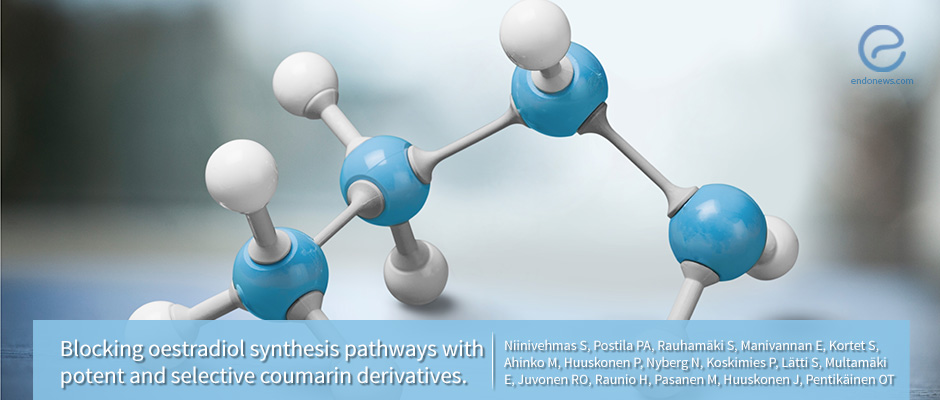Coumarin based compounds found to inhibit the estradiol synthesis pathway
Aug 21, 2018
Targeting the Estrogen Synthesis Pathway to Combat Endometriosis
Key Points
Highlights:
- Coumarin-based molecules may serve as a potent inhibitor of the estradiol synthesis pathway.
Importance:
- Increased ER or its activity occurs due to high 17-β-oestradiol (E2) levels. To block the ER function indirectly by lowering the E2production is possible either through the aromatase pathway (where E2 is produced from androgen hormones) or through the sulphatase pathway (where oestrone susulfateE1S) ultimately is converted to E2.
- The non-steroidal potent small-molecule HSD1 inhibitor "3-Phenylcoumarin" established here has the capacity to block both pathways.
Key Results:
- Coumarin-based compounds have the potential for lowering estradiol levels needed in the development of molecules targeted against the growth of breast cancer or endometriosis.
- Coumarin-based compounds are effective because they block the aromatase pathway or the sulphatase pathway.
- The R1 hydroxyl position of the coumarin ring is particularly important for strong inhibition 7-β-hydroxysteroid dehydrogenase-1 (HSD1)
What’s done here?
- This article explores the different chemical variations of a known compound, 3-phenylcoumarin, and their inhibitive effect on an enzyme involved in the estradiol synthesis pathway, HSD, and other enzymes.
Lay Summary
Endometriosis is a disease characterized by ectopic endometrial tissue outside the endometrium. Several biochemical and molecular pathways have been researched and used to alleviate endometriosis symptoms by inhibiting key molecules involved in the menstrual cycle.
This review paper by Niinivehmas et al. titled, “Blocking oestradiol synthesis pathways with potent and selective coumarin derivatives”, published in the Journal of Enzyme Inhibition and Medicinal Chemistry, aims to present the different coumarin derivatives that have been investigated to inhibit an enzyme involved in the estradiol (also known as oestradiol) synthesis pathway.
Researchers used an organic chemical compound (3-phenylcoumarin) and its 5 manufactured variations (analogs) to see which chemical works best to inhibit the 17-β-hydroxysteroid dehydrogenase 1 (HSD1) enzyme, which is involved in the final steps of estrogen synthesis and overexpression is associated with the development and progression of endometriosis. The analogs were also used to see cross-reactivity to the estrogen receptor, aromatase, and other enzymes.
Results have revealed that phenylcoumarin is suitable for inhibiting the HSD1 enzyme. The five analogs that were created, however, some analogs (1, 2 and 4) had a greater efficacy than the others. Researchers also found that a specific location (the R1 hydroxyl position), is important for strong inhibition of HSD1. As for the inhibition of the other enzymes, although most worked well, the most potent HSD1 inhibitor was #4.
This study has helped lay the groundwork for the development of more potent small-molecule inhibitors of HSD using 3-phenylcoumarin as a scaffold. However, further research and development of this compound are needed before animal models can be used to initiate clinical trials.
Research Source: https://www.ncbi.nlm.nih.gov/pubmed/29620427
estradiol endometriosis inhibiton chemical compound aromataze 17-b-hydroxysteroid dehydrogenase

